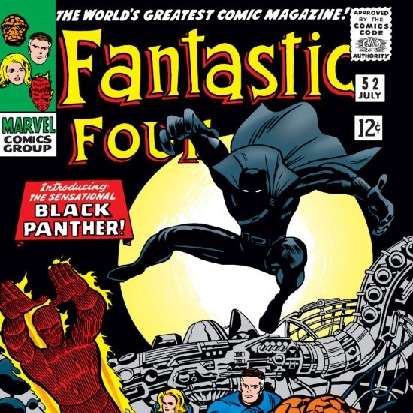Movies discussed
- Pretty much all the Marvel Studios movies featuring Thor:
- Avengers: Infinity War
- Avengers: Endgame
- Thor
- Thor: The Dark World
- Thor: Ragnarok
If you haven’t seen the above movies, then stop reading right now and go back, as there are spoilers ahead!

Endgame had more than its fair share of iconic scenes through it’s three-hour runtime, but one of the most powerful didn’t feature portals, snappy wisecracks, or the last minute arrival of a powerful saviour. It was a simpler, character-driven scene featuring Thor and his mother. This scene resonated with a lot of people, and there’s a lot we can take from it.
How the Mighty Fall
When we first see Thor in Endgame, we immediately see that all is not right with him. He is consumed by guilt, self-blame, and regret (and looks a little bit like he’s preparing for a rap battle). How does someone like Thor, one of the most powerful beings we know of in the Marvel universe, end up like this? Well, he’s had a bad run of late:
- He lost his mother.
- He lost his father.
- He finds out he has a sister, which would have been good news, if she wasn’t kind of a murderous psychopath. She kills many Asgardians, including many of Thor’s closest friends, and ends up taking out one of Thor’s eyes.
- In order to defeat his sister, Thor has no choice but to make the bold move of destroying Asgard completely (or at least, the place Asgard was located at the time). All the infrastructure, culture, history, artefacts, and research of Asgard, destroyed in a few moments.
- He finds himself thrust into the role of King of Asgard – a responsibility he has been avoiding for some time.
- He is then immediately attacked by Thanos, who slaughters half of the remaining Asgardians.
- His brother is killed before his eyes, and his lifeless body dumped at Thor’s feet.
- His best friend is also killed before his eyes. Thor swears he’ll get his vengeance.
- Thanos arrives in Wakanda, moments away from achieving his goal of wiping out 50% of all life. Thor has two clear opportunities to kill Thanos, save the universe, and get his revenge. First, he could have gone for the head with his initial strike with Stormbreaker. Secondly, he could have finished Thanos off immediately after landing, instead of taking time to gloat. He doesn’t, and Thanos is able to complete the snap.
Yikes! What’s interesting here is that, up until the arrival of Thanos and the Black Order, Thor was doing relatively well. He was headed for Earth and fairly optimistic about the future. What took him down, was the fact that he hadn’t met the expectations he had set for himself, and for reality.
The Face of Depression

When Rocket and Professor Hulk arrive in New Asgard, they come across Valkerie (“Great to see ya, angry girl!”) who tells them about Thor’s condition. So when the pair enter Thor’s house shortly after, we might expect to see a moping, crying God of Thunder, sitting alone in the dark with only his misery for company.
Instead, we see someone who, at first glance, looks pretty upbeat (“Come here you little rascal!”). He’s hanging out with friends, smiling, joking around. He seems boisterous, even. But when Hulk mentions Thanos’s name, we see that this is just an act.
This is a very accurate depiction of depression, and other emotional conditions. People with such conditions have a face that they put on – they don’t show their real state to the world. This can be for many reasons (pride, fear of judgement, a sense of duty), but the reasons are often very positive and thoughtful – perhaps they don’t want to burden others with their problems, or they are trying to appear strong for the sake of others.
This is what’s going on with Thor. He had a standard for himself and for reality – he truly believed that he would defeat Thanos (“Fate, wills it so”), and he put the weight of the universe on himself to achieve that goal. When he didn’t, that weight came crashing down upon him – he lost his self-worth, and came to believe that he was a failure, a fraud – not the person he was supposed to be. He uses maladaptive coping methods, drinking alcohol and binge eating, which cover up his feelings of guilt but do not help him deal with them.
These things both characterise and sustain depression. People suffering from depression, anxiety, and other emotional disorders have an inaccurate, overly negative view of themselves, who they should be and how they should behave. They don’t see themselves as they really are. They focus on their mistakes and failures, and they ignore their positive aspects. They often fall into negative coping patterns. Ultimately, the way they think and act can leave them trapped in this state – unable to remember the good things that they have done in the past, and unable to imagine a future where they don’t feel this way.
Who You’re Meant to Be Vs Who You Are

And now we get to the scene from Endgame that I mentioned earlier. Thor receives some words of encouragement from his mother, who compassionately, without judgement, tells him that he is absolutely a failure (“That’s a little bit harsh”) – but – and this is the important part – that this is OK! Failure is not a bad thing. Nobody is perfect. Everybody makes mistakes and messes up. If you go back to the list of Thor’s woes, you’ll see that in all of these cases, Thor tried his upmost to do the right thing. Even hiding in his house, shirking his responsibilities as king, was well-intentioned. He did it because he believed that Asgard was better off without him.
This shows how a strong self-belief is a double-edged sword. Self-belief is a powerful tool – if you believe yourself to be powerful, successful, attractive, or whatever else – you’ll often get better results than if you didn’t believe that. That’s the whole philosophy behind “fake it until you make it.” Humans are influenced by confidence, if someone says something with confidence, we feel this psychological urge to agree with it. Self-belief can end up providing some actual, positive results – and these can then build genuine confidence.
But, sometimes reality comes along and shatters all your beliefs about yourself – and your whole identity might come down with it. We need to have a better relationship with failure – to maintain self-belief, to strive for what we want, while accepting that failure is an acceptable outcome – a positive outcome, even, because it provides lessons we can learn from.
That’s why Mjolnir comes to Thor when he summons it. The fact that he has failed, the fact that he is depressed and out of shape – these things doesn’t make him any less worthy. They just make him believe he is less worthy. That’s why he’s so hesitant while summoning the hammer. When the hammer answers his call, he realises that he is still worthy, that his struggles have not changed who he really is.
A Mjolnir Moment

Another way that Thor’s character arc is a good representation of depression, is that this moment does not cure him. It would have been tempting for the writers to simply say “OK, Thor’s better now,” and have him act like his old self. But we see in later scenes that whilst Thor is making progress, he’s not out of the woods yet (his pleas to be the one who snaps the Stark Gauntlet, for instance).
His Mjolnir Moment is not a cure, but it is a turning point. The fix takes longer, and requires a long-term shift in actions and behaviour. It’s important to draw support from loved ones, trusted people, and professionals. If you are suffering from any mental health issue, realise, as Thor did, that your struggles don’t change who you are, and that you can surpass them with the right social support. Likewise, if you know people who are struggling with mental health issues, be patient with them, and keep in mind that their illness doesn’t take away their value as a person.
Recommended Reading
If you suffer from depression, anxiety, or any other mental health condition (or if you believe that you might do), your first stop should be to seek the advice of a medical professional. The following books are useful if:
- You are seeing a professional and want extra information and exercises to do in your space time.
- Your symptoms are very mild (again, if you’re unsure, it’s best to get checked out)
- You don’t presently have symptoms, but want to build up your resilience so that you’re less prone to them in the future
That said, here are some suggestions. Note: the below are affiliate links, meaning lessonsfromheroes.com will earn a commission if you buy the products after following the link:
- The Happiness Trap – an excellent self-help book from the perspective of “Acceptance and Commitment Therapy.” It’s an engaging, easy read, and has plenty of exercises for you to do. (Amazon US | Amazon UK)
- The Compassionate Mind Workbook – as we’ve seen, people with depression are often overly critical and harsh on themselves. Self-compassion is the route you can learn to be kinder towards yourself. This book walks you through how to do that step-by-step. (Amazon US | Amazon UK)
- Lost Connections – most self-help books for depression and anxiety focus on you – what you think, how you act, your beliefs. This is important, but there’s a whole world of things outside of us, constantly influencing our emotions. In this book Hari explains what some of these are, and how they affect us when we lose connection with them, and how to re-connect. (Amazon US | Amazon UK)


